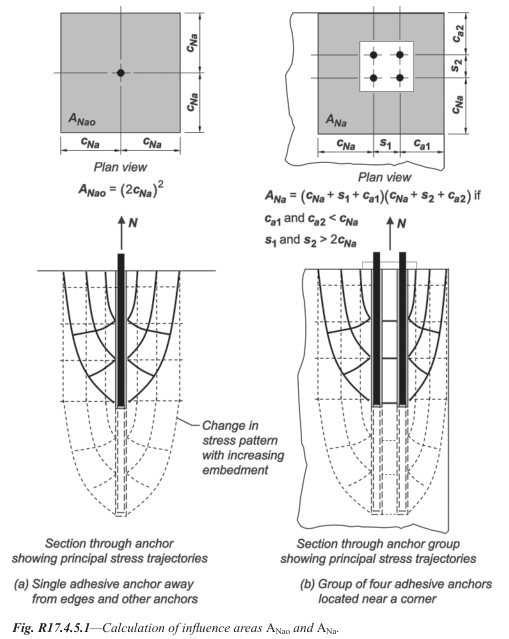MJC6125
Structural
- Apr 9, 2017
- 120
I've use the Design of Pedestal Anchorage paper by Windianto in the past (link below for reference). I've only ever used it for cast in headed anchor bolts. I'm wondering if a similar methodology could be used with post installed anchors (specifically threaded rod epoxy anchors with deep embedment)? Is there something different about a properly installed epoxy anchor that would create a different concrete breakout cone or something else that would not satisfy the assumptions of this design methodology?
My specific situation that I'm trying to justify anchor reinforcement for is slightly different than pedestal anchorage, but I'm wondering if I can do something similar with tension breakout out cone anchorage. I have an anchor drilled into the top of an 8" thick concrete wall that has about 5 kips of tension force on it. If I satisfy all of the ACI Chapter 17 anchor design equations except for concrete breakout, can I use the existing vertical reinforcement in the concrete wall to resist the concrete breakout? See image below for reference.
Link to Paper: Link
Image:

My specific situation that I'm trying to justify anchor reinforcement for is slightly different than pedestal anchorage, but I'm wondering if I can do something similar with tension breakout out cone anchorage. I have an anchor drilled into the top of an 8" thick concrete wall that has about 5 kips of tension force on it. If I satisfy all of the ACI Chapter 17 anchor design equations except for concrete breakout, can I use the existing vertical reinforcement in the concrete wall to resist the concrete breakout? See image below for reference.
Link to Paper: Link
Image:




